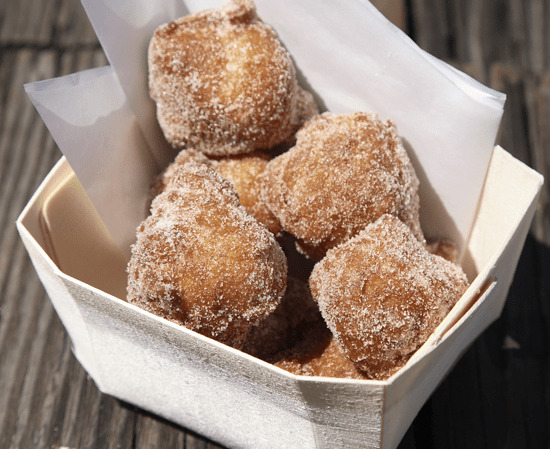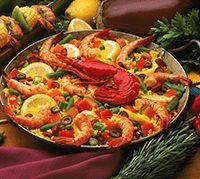Native to New Orleans, Creole-style cooking is the product of a lively blend of cultures that came together in the Big Easy, including French, Spanish, West African, Native American, Italian, Irish and Portuguese. While Creole and Cajun cooking share some similarities (see Did you know? below), Creole dishes include a wider variety of spices, soups and sauces — and tomatoes, which you’ll find in Creole jambalaya, for instance, but never in the Cajun version.
Creole Gumbo
First described in 1802 and popularized by chef Paul Prudhomme in the 1980s, gumbo is a shellfish stew that includes celery, bell peppers, onions, okra, filé powder (ground sassafras leaves) and tomatoes. Sausage or ham is often added. The dish likely derived its name from the Bantu African word for okra (ki ngombo) or the Choctaw native word for filé (kombo). You’ll find a delectable recipe here.
Red Jambalaya
Possibly derived from Spanish paella, Jambalaya originates from the French Quarter and is traditionally made from celery, peppers and onions, chicken or sausage, tomatoes and other vegetables, seafood, rice and stock, boiled, simmered and stirred. In some versions, the mouthwatering mix is baked after cooking. The “red” is a reference to the Creole-only tomatoes. A recipe for Hattie’s Jambalaya can be found here.
Beignet
If you prefer to skip right to dessert — or breakfast — you really can’t go wrong with Creole beignets (unless you insist on counting calories). Introduced in New Orleans by French colonists, beignets, like English fritters, are a deep-fried pastry powdered with confectioners’ sugar. They are Louisiana’s official state donut. Want to make your own?
What’s your preferred Creole dish? Share your tastes and food ideas in the Shop Talk Blog community forum!
Did you know: Creole is not Cajun?
While these two cooking styles are often lumped together, they’re quite distinct. Unlike its big city New Orleans cousin, Cajun food is thought of as country food, derived from the Acadians who were exiled from eastern Canada in the 1700s and resettled in Louisiana.
It’s big on the “holy trinity” of onions, celery and bell peppers, as well as and garlic but no tomatoes! (Source)



WANT ALL THOSE FOODS!
Everything looks and sounds delicious. I guess I’m going to have to use some of these recipes to get this kind of food. The Beignets first!
You are never too old to learn.
Really enjoyed this information … I knew Creole/Cajun foods were different, but this is the first time I’d seen it put in simple, easy to understand terms. New Orleans is such a wonderful ‘melting pot’ of cultures and as a result an amazing site for wonderful food.
I love d Cajun & Creole food =. Especially seafood <d ettouffee.
Dirty rice with poached oysters,want to learn how to cook that
omg these look delicious! I seriously am going to make at least one of these! lol
I love new Orleans French quarters and I use a lot Cajon seasoning for just garlic shrimp.
about the only thing I would like to try or Creole cooking is the dessert. I am not a fan of gumbo and jambalaya. understand that Louisiana food is spicy and hot and I’m not a happy camper when it comes to spicy food.
i love lousiane cooking thank you for getting on my e-mail
I guess my favorite creole or cajun is fried okra with the second being fried green tomatoes.
Please send me your receipt for fried green tomatoes, my husband loves the ones his grandma use to make for him and I don’t have a clue how to do them.
Thanks
Hey Y’all,
Never forget the Cajun cooking food “holy trinity”: onion, celery, and bell pepper. Makes the base of the most memorable dishes, and is a kitchen stable.
Would like to try some of these recipes
I enjoy eating cajun food do not know how to cook it
i liked it
Love to Cajun an creole lived there for 9yrs.
I could eat Creole and Cajun food 365 days a year!! It is that good!!
I like creole food it’s a little spicy but very good hits all tastes buds I think you should keep it on the shelf still!
Like
You are right on the difference between creole and cajun. I’m impressed.
It all sounds interesting And a person that enjoy. Enteraining will embace. These dishes with delight.